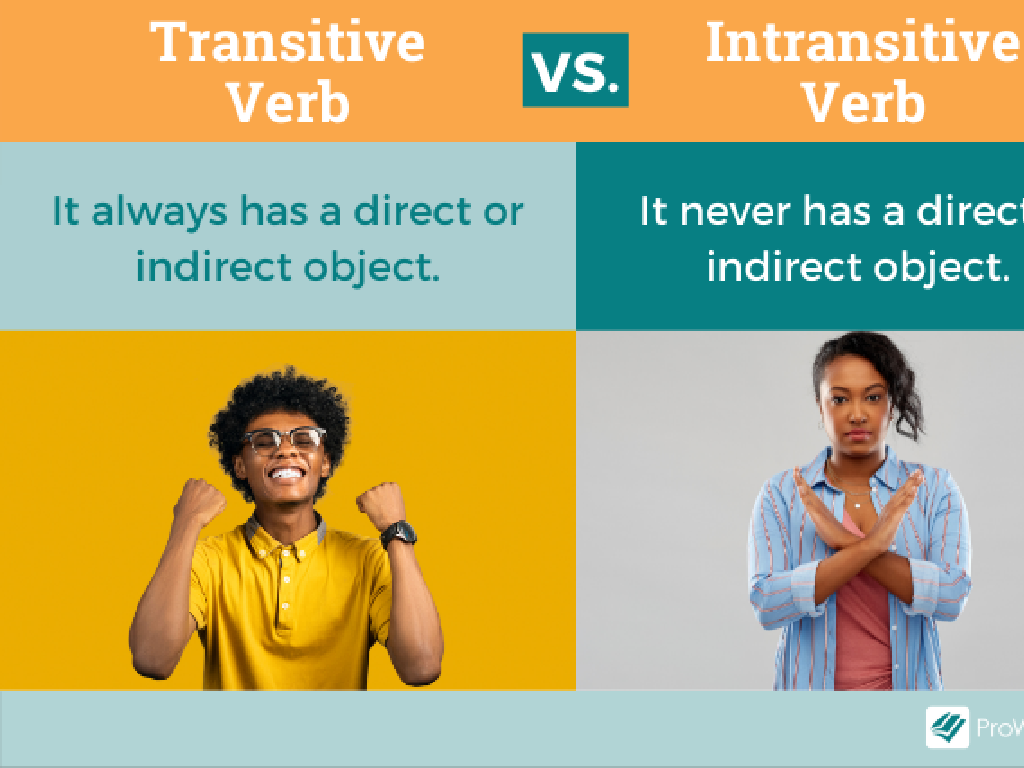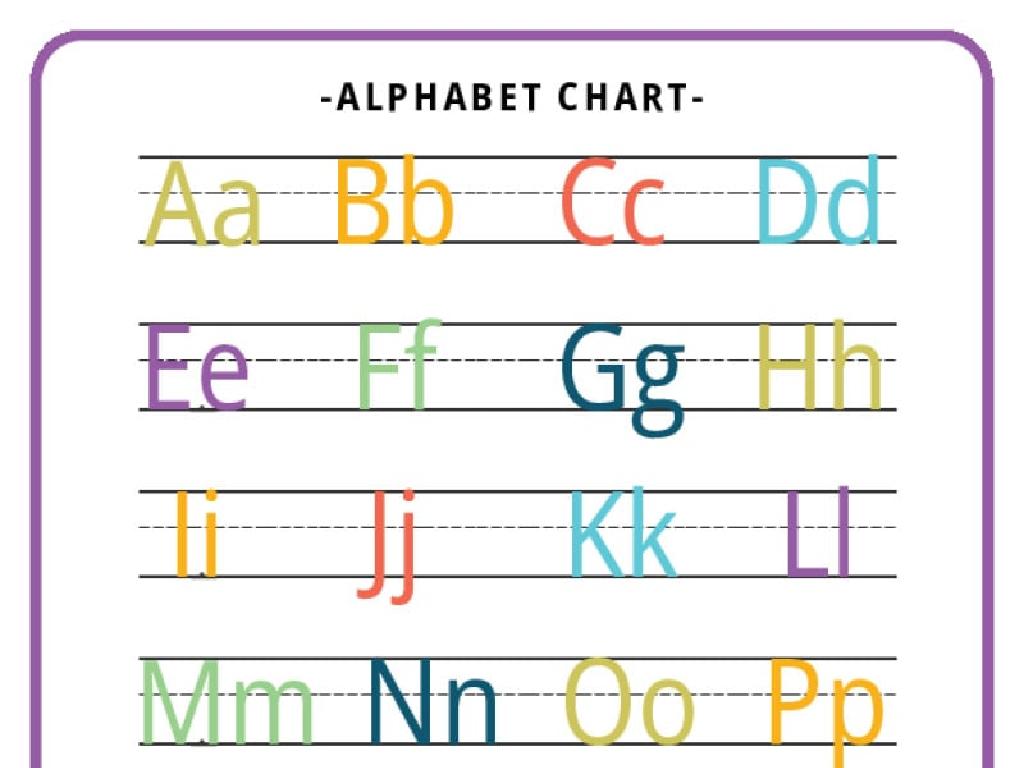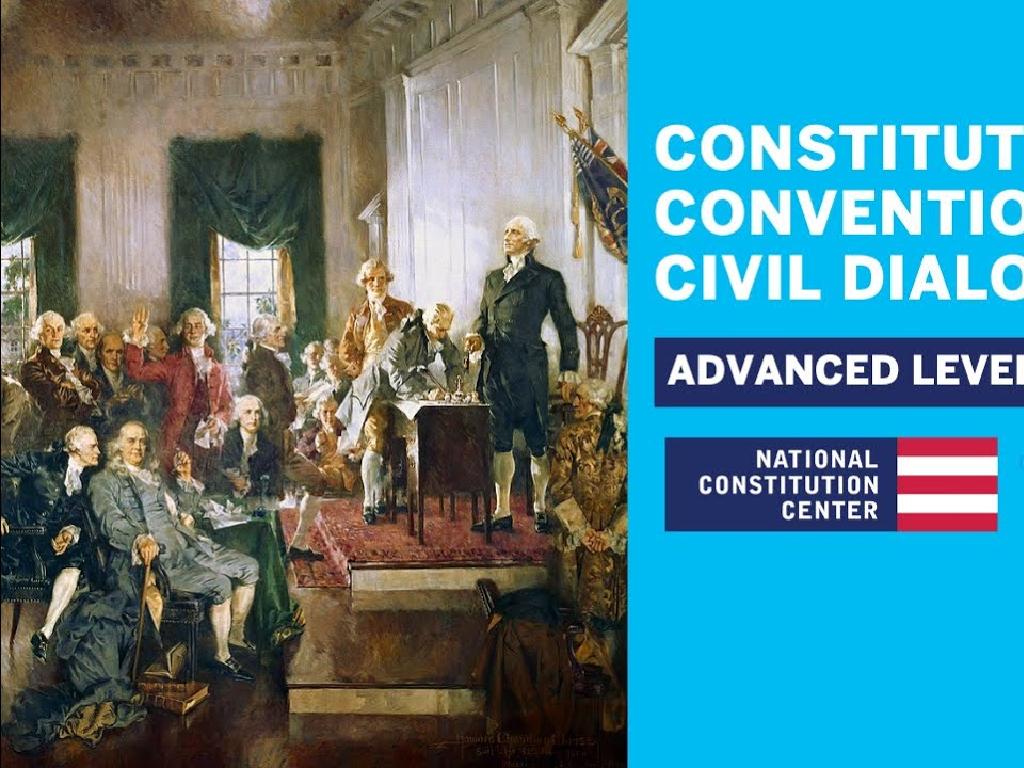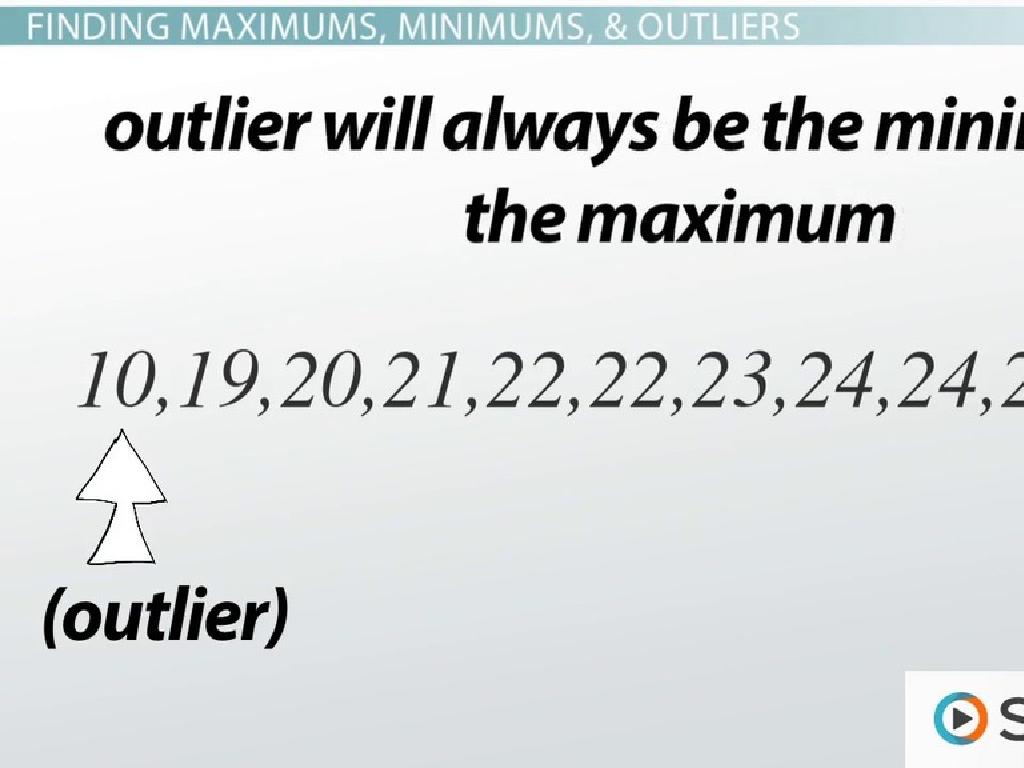Identify Coordinating Conjunctions
Subject: Language arts
Grade: Fifth grade
Topic: Conjunctions
Please LOG IN to download the presentation. Access is available to registered users only.
View More Content
Welcome to Conjunction Junction: Coordinating Conjunctions
– Exploring Coordinating Conjunctions
– Coordinating conjunctions join words, phrases, or clauses
– How words team up in sentences
– They help words to ‘hold hands’ and work together
– The role of conjunctions
– Conjunctions are like glue for sentence parts
– Why conjunctions matter
|
This slide introduces the concept of coordinating conjunctions to the students. Explain that coordinating conjunctions are words that connect other words, phrases, or clauses in a sentence, making the sentence more complex and interesting. They serve as a bridge to combine ideas smoothly. Emphasize the importance of conjunctions in writing and how they can change the meaning or add detail to sentences. Provide examples of coordinating conjunctions (for, and, nor, but, or, yet, so) and show how they can link similar grammatical structures. Encourage students to think of conjunctions as ‘team players’ that help words work together to make sentences clearer and more engaging.
Exploring Conjunctions in Sentences
– Conjunctions: Sentence bridges
– They link similar elements together
– Connect words, phrases, clauses
– Three types of conjunctions
– Coordinating: FANBOYS, Subordinating: although, because, Correlative: either…or
– Focus: Coordinating conjunctions
– Coordinating: for, and, nor, but, or, yet, so
|
This slide introduces the concept of conjunctions to fifth-grade students, highlighting their role as connectors in sentences. Begin by explaining that conjunctions are like bridges that link different parts of a sentence to make it complete and coherent. Emphasize the three types of conjunctions: coordinating, subordinating, and correlative, and explain that each type has a specific function in sentence construction. For this lesson, the focus will be on coordinating conjunctions, often remembered by the acronym FANBOYS (for, and, nor, but, or, yet, so). Provide examples for each and encourage students to come up with their own sentences using coordinating conjunctions. This foundational understanding will help students improve their writing skills by creating more complex and varied sentences.
Focusing on Coordinating Conjunctions
– Coordinating conjunctions connect equals
– Words, phrases, or clauses of equal importance are joined.
– Recall FANBOYS acronym
– For, And, Nor, But, Or, Yet, So help combine ideas smoothly.
– See conjunctions in sentences
– ‘I wanted to play, but it was raining.’ The word ‘but’ is the conjunction.
– Practice using FANBOYS
|
This slide introduces students to coordinating conjunctions, which are used to connect words, phrases, or clauses of equal grammatical importance. The mnemonic ‘FANBOYS’ helps students remember the seven coordinating conjunctions. Provide examples of each conjunction used within a sentence to illustrate their function. Encourage students to come up with their own sentences using FANBOYS. In the next class, plan activities where students can practice identifying and using these conjunctions in both written and spoken exercises.
Coordinating Conjunctions: Combining Ideas
– ‘And’ joins similar ideas
– Example: ‘I like apples and oranges.’
– ‘But’ indicates a contrast
– Example: ‘I like apples, but not oranges.’
– ‘Or’ gives options
– Example: ‘Apples or oranges: which do you prefer?’
– Practice using conjunctions
|
This slide introduces students to coordinating conjunctions, focusing on ‘and’, ‘but’, and ‘or’. ‘And’ is used to combine similar ideas or items in a list. ‘But’ is used to show a contrast between two ideas. ‘Or’ is used when presenting choices or alternatives. Encourage students to think of their own sentences using these conjunctions to solidify their understanding. In the next class, have students practice by writing sentences that use these conjunctions and share them with the class to create an interactive learning environment.
Let’s Practice Coordinating Conjunctions!
– Find the conjunction in a sentence
– Create sentences with FANBOYS
– Use For, And, Nor, But, Or, Yet, So to connect ideas
– Pair up and share your sentences
– Discuss how conjunctions join ideas
– See how they make sentences flow better
|
This slide is for a class activity to practice identifying and using coordinating conjunctions. Students will first work individually to locate the coordinating conjunction in given sentences. Next, they will create their own sentences using the acronym FANBOYS, which stands for the coordinating conjunctions: For, And, Nor, But, Or, Yet, So. After crafting their sentences, students will pair up with a classmate to share and discuss their sentences. This peer interaction will help reinforce their understanding of how conjunctions function to connect ideas within a sentence. As a teacher, circulate the room to assist and provide feedback. Possible activities: 1) Sentence construction relay, 2) Conjunction matching game, 3) Conjunction role-play, 4) Sentence improvement challenge.
Group Activity: Conjunction Creation!
– Write a story with FANBOYS
– Use For, And, Nor, But, Or, Yet, So to connect ideas
– Highlight each conjunction
– Use a different color or underline conjunctions in your story
– Present your story to the class
– Collaborate and have fun
– Work together to create an interesting story
|
This group activity is designed to help students apply their knowledge of coordinating conjunctions (FANBOYS) in a practical and fun way. Divide the class into small groups and instruct them to write a short story that includes each of the FANBOYS conjunctions. They should highlight or underline the conjunctions to show their understanding of how to use them to connect ideas. After the stories are written, each group will present their story to the class, which will help reinforce their learning and improve their public speaking skills. For the teacher: Prepare a list of story prompts to help groups get started, ensure that each group has different colored highlighters or pens for underlining, and provide a rubric for what a successful story should include, such as the correct use of each conjunction and creativity in connecting ideas.
Conjunctions: Wrapping Up & Homework
– Recap: Why conjunctions matter
– Homework: Craft ten sentences
– Include ‘for’, ‘and’, ‘nor’, ‘but’, ‘or’, ‘yet’, ‘so’ in sentences
– Use various coordinating conjunctions
– Show how they connect ideas smoothly
– Study for a conjunctions quiz
|
As we conclude today’s lesson, remind students of the role coordinating conjunctions play in linking words, phrases, or clauses together to make sentences clear and coherent. For homework, students should write ten original sentences, each using a different coordinating conjunction. This will help reinforce their understanding and application of conjunctions. Encourage creativity and the use of sentences that might relate to their own experiences or interests. Prepare them for a quiz in the next class to assess their grasp of the topic. Offer some study tips, such as reviewing their homework sentences and the examples discussed in class.






